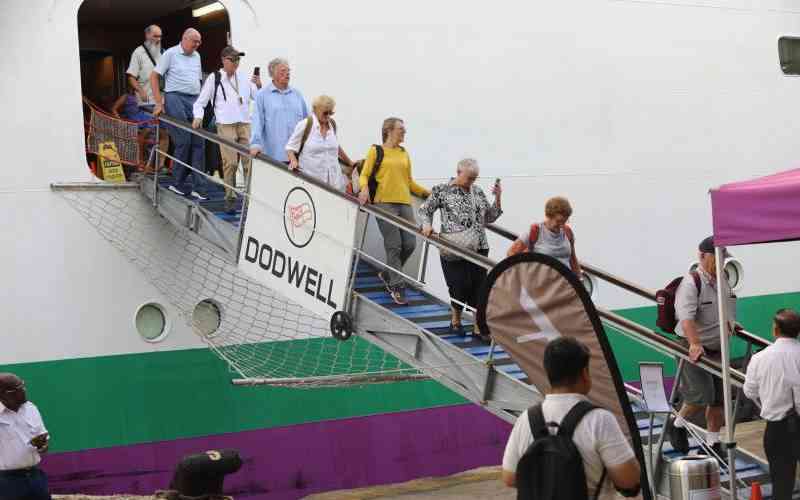By THORN MULLI
It might be a misplaced stereotype that Coastarians are chilled out, never in a hurry. What is certain, however, is that sand and sea with a generous sprinkling of sun is the perfect getaway for a soul escaping the bustle of everyday life.
Driven by this philosophy, I was on a quest to unveil a coastal jewel, Kilifi, that has, for ages, lived in the shadows of her sisters Kwale (read Diani), Malindi and Mombasa. Even Mtwapa, Mombasa’s addendum, attracts more tourist buck than the town whose name locals swear is a corruption of ‘cliff’.
From my school days, Kilifi was famous for large-scale cashew nut and sisal farming. It seems the decline of the two cash crops heralded the stagnation of the area’s promise.
But every cloud has a silver lining, and missing out on the tourism goody bag has been a blessing. This was evident as I journeyed north from Kenya’s second largest city.
Compared to her sisters, who lost their virginity to an unforgiving human population, sisal estates and the odd forest still cover a healthy chunk of Kilifi. It is not a wonder that this region is now a playground for the rich as luxury real estates angle for space with stunning natural scenery.
Fifty kilometres on fairly good road by Kenyan standards, led us to Mnarani Club located on the fringes of Kilifi Town.
A hearty welcome from the staff led by assistant manager Elma Venter was followed by late breakfast in the high-roofed dining area beside the infinity pool.
With a packed itinerary and travel lag hovering, I retreated to my suite for a power nap. No need for air conditioning: The sliding side doors let in the intoxicating breeze laced with salt.
A few hours later, it was time for the day’s activities. A quick, yet detailed tour guided by Elma ensured I was fully acquainted with the 40-acre facility set on cliffs towering over Kilifi Creek.
I was impressed by the club’s desalination plant and fresh vegetable green house. The latter, though in its pilot stage, ensures all vegetables served here are nothing but organic.
A deck built over the bar on the farthest end of the dining area has one of the most magnificent views possible; the kind that suits a marriage proposal. There is an endless horizon staring back, sparkling clean beaches, and a jetty with docked Swahili dhows rocking gently.
After a lasagna lunch, we headed to Buccaneer Diving for a lesson with dive master Timothy Nderitu Rendell. A steep decline led us to the centre that the diving school shares with 3 Degrees, which handles water sports.
Going back up the steep slope is no easy feat, and is the reason why the incline was christened ‘Cardiac Hill’.
Nderitu made grasping of diving basics easy for this novice. Like an elder brother, he shared chunks of diving wisdom laced with humour.
Stay informed. Subscribe to our newsletter
With liability waiver forms signed and the brain swirling with instructions, it was time for the maiden dive.
Diving assistant Chengo Kambi ensured we were properly kitted. The equipment weighed a tonne! The nitrox tank alone was at least 15 kilogrammes.
After a couple of excited false starts, I was amidst coral and multi-coloured fish, and the words of a fellow snorkeler on a previous expedition sank in: “Snorkeling is like watching a movie, but diving is being in the movie.”
Later, there was an al fresco beach dinner on the same sand I had walked on before cutting my diving teeth. Acrobats, urged on by a silver moon, performed as I ticked my mental bucket list.
 The Standard Group Plc is a
multi-media organization with investments in media platforms spanning newspaper
print operations, television, radio broadcasting, digital and online services. The
Standard Group is recognized as a leading multi-media house in Kenya with a key
influence in matters of national and international interest.
The Standard Group Plc is a
multi-media organization with investments in media platforms spanning newspaper
print operations, television, radio broadcasting, digital and online services. The
Standard Group is recognized as a leading multi-media house in Kenya with a key
influence in matters of national and international interest.
 The Standard Group Plc is a
multi-media organization with investments in media platforms spanning newspaper
print operations, television, radio broadcasting, digital and online services. The
Standard Group is recognized as a leading multi-media house in Kenya with a key
influence in matters of national and international interest.
The Standard Group Plc is a
multi-media organization with investments in media platforms spanning newspaper
print operations, television, radio broadcasting, digital and online services. The
Standard Group is recognized as a leading multi-media house in Kenya with a key
influence in matters of national and international interest.









